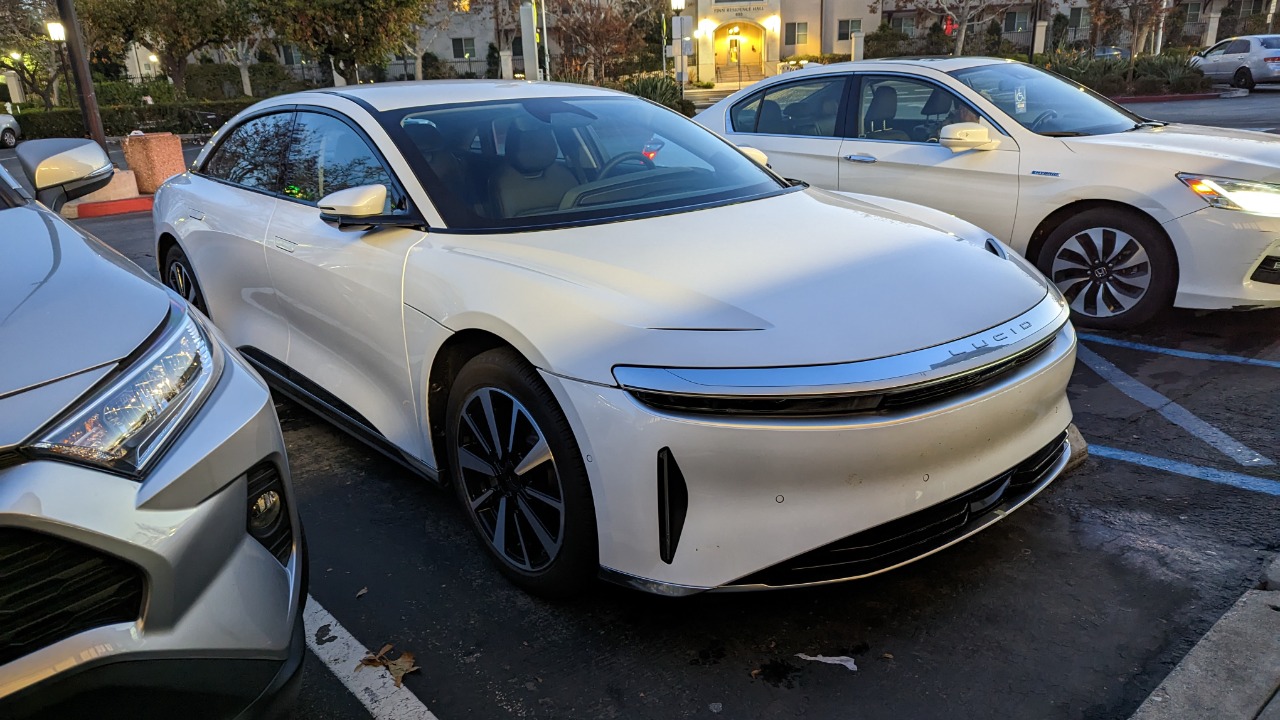
The Lucid Air Sapphire, a high-performance electric sedan, recently underwent a 70-MPH range test that revealed a significant trade-off. The vehicle’s immense power output, while impressive, comes at the cost of efficiency, potentially impacting its real-world usability for buyers seeking both speed and sustainability. This test, conducted on October 25, 2025, underscores the vehicle’s engineering focus on acceleration over long-distance cruising.
The Lucid Air Sapphire’s Power Specifications
The Lucid Air Sapphire is a powerhouse, boasting a tri-motor setup that delivers a staggering 1,234 horsepower and 1,430 lb-ft of torque. This configuration enables the vehicle to sprint from 0-60 MPH in under 2 seconds, a feat that is nothing short of impressive. The vehicle’s 118 kWh battery pack plays a crucial role in supporting such power, seamlessly integrating with the vehicle’s aerodynamic design to ensure high-speed stability.
During the October 25, 2025, evaluation, the engineering team provided insights into the delicate balance between raw output and energy management. The team emphasized that while the vehicle’s power is its main selling point, it is also a factor that could potentially impact its range and efficiency.
Methodology of the 70-MPH Range Test
The range test was conducted under controlled conditions to simulate steady-state driving. The vehicle maintained a highway speed of exactly 70 MPH using cruise control, with no regenerative braking or climate adjustments. The test began with a full charge from the factory charger, and mileage was tracked via the onboard computer and independent GPS for accuracy.
The test route was carefully chosen to minimize variables that could affect the range. The terrain was flat, and the ambient temperature was around 70°F. This allowed the team to focus solely on the vehicle’s performance and efficiency at sustained speeds.
Key Results from the Range Evaluation
The results of the range test were revealing. The Lucid Air Sapphire achieved a range of approximately 300 miles at 70 MPH, falling short of the EPA’s 410-mile estimate. This discrepancy can be attributed to the aerodynamic drag that the vehicle experiences at sustained speeds. The energy consumption figures were around 35 kWh/100 miles, which provides context when compared to idle or lower-speed tests.
Observations from the October 25, 2025, run included minimal efficiency gains from aero-optimized wheels. Despite the vehicle’s impressive power output, it became clear that there are significant trade-offs when it comes to efficiency.
Downsides of High Power on Efficiency
The Sapphire’s powerful motors increase the baseline energy draw even in eco modes, leading to faster battery depletion during highway travel. This is a significant downside for those who value efficiency and range. Additionally, thermal management poses a challenge, as cooling the high-output components consumes additional power, exacerbating range loss.
Experts have commented on the inherent trade-off, stating that prioritizing 1,200+ HP sacrifices up to 25% of potential range compared to milder trims. This is a key consideration for potential buyers who are seeking a balance between power and efficiency.
Comparisons to Other Lucid Air Variants
When compared to other Lucid Air variants, the Sapphire’s 300-mile 70-MPH result falls short of the Air Pure’s 420-mile capability. This difference can be attributed to variations in the powertrain. The Grand Touring model, on the other hand, achieves around 350 miles under similar conditions.
Despite these differences, all variants share platform benefits like the 900V architecture. However, the extra motors in the Sapphire amplify efficiency penalties, which is a key consideration for potential buyers.
Implications for Performance EV Buyers
For buyers who prioritize acceleration over range, the Lucid Air Sapphire may be an attractive option. However, for those who have daily commutes over 200 miles, the vehicle’s range may be a concern. The Sapphire’s power demands quicker top-ups to mitigate the range shortfalls revealed in the test.
Long-term ownership factors, such as potential software updates post-October 25, 2025, to optimize range without curbing power, should also be considered. These updates could potentially improve the vehicle’s efficiency and range, making it a more viable option for those seeking a balance between power and sustainability.
Broader Context in the EV Performance Landscape
When compared to rivals like the Tesla Model S Plaid, which logs similar 70-MPH ranges around 310 miles despite less torque, the Lucid Air Sapphire’s results provide valuable insights. The industry is trending towards balancing power and efficiency, and the Sapphire serves as a case study for luxury EVs.
Future iterations of the vehicle, based on the insights gained from the test, could potentially incorporate lighter materials to extend range without power cuts. This would allow the vehicle to maintain its impressive power output while improving its efficiency and range, making it a more attractive option for a wider range of buyers.
More from MorningOverview